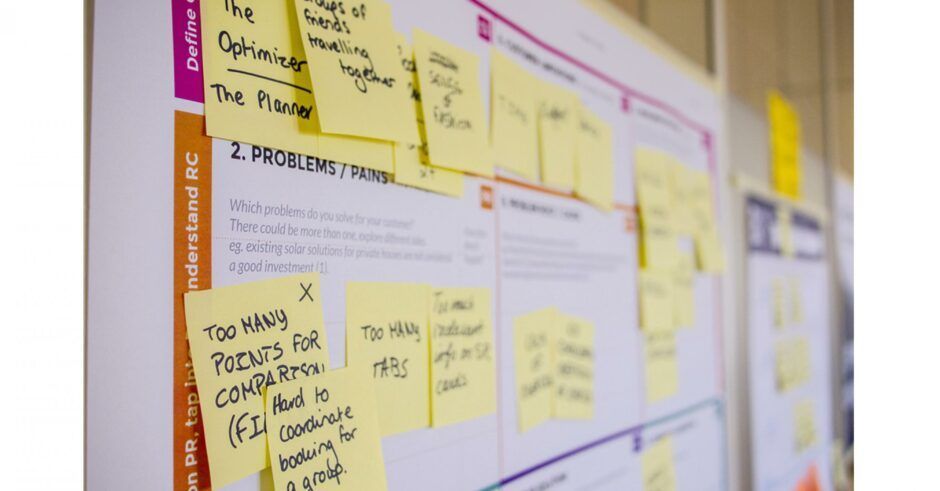Agile is a word always on the lips of digital business leaders. It’s the way to be if you are working in digital and has set the popular standard as the recent way to work. This isn’t the first time a methodology has grabbed the business world so completely – after all the world of business does like its new ways of working.
When I started working as a management consultant, the industry had different buzzwords. We were TQM, Balanced Scorecard and Lean. We had our core ways of being, all helpfully documented in books we could buy out at the airport.
Consultancy Bingo
I remember one time when I was on the other side of the table watching one of the Big Five consultancies present a pitch for some work. While they set-up their PowerPoint presentations, our assessment sheets were passed out. One cheeky member of the team also handed out a grid with a collection of words. The boxes contained words such as blue sky thinking, deep dive, outside the box and game changer.
Sixteen boxes in total on a grid, which I later got to understand as Consultancy Bingo (though there is a less polite name – BS Bingo). The aim of ‘Consultancy Bingo’ is to discreetly tick each buzzword off as they are said by the consultants. It’s not the kindest thing to do I grant you, but it is surprisingly effective at keeping people focused on a long presentation. And management consultants are a thick-skinned bunch who are more than capable of laughing at themselves. If someone was to put a Bingo box in front of me today I’m pretty sure, Agile, Digital, Social, Design Thinking and even Big A or little A would all feature.
Now let me state I am an agile fan. I love its speed, quick forgiveness of mistakes, transparency and absolute customer focus – all spot on. It’s a good thing for sure but the agile ‘brand’ that has formed around it is starting to limit the adoption of its value outside of digital circles.
Why Agile is Suffering
Agile is suffering from an over-enthusiastic fanbase – which turns it into a movement, a clique or a fad in others eyes. The problem is that not everyone wants to be part of a clique. And in the process of avoiding being part of a ‘clique’, people form biases. What we now see in the workplace, outside of the tech teams, is an ‘ignore-agile’ bias.
People shape their identity by the tribes they belong to and many business people take pride in not being sucked in by over-popular trends they believe will pass. People are defined by their tribes, which especially happens with early adopters (see my post on enthusiastic early adopters.)
Some of the agile tribes in organisations have gone so over the top over the last few years in their love of agile, that people outside of IT have been put off. Whole executive teams are getting tired of agile without ever getting near its true value. They see it as something for the geeks in IT and not for them. The ‘only way is agile’ mantra ends up too absolute and too focused on ceremonies rather than principles, and they stop listening. But what happens then is they miss out on the value agile (small a) principles can bring to the rest of the business.
Some Advice
Here is some advice for anyone working with people outside of digital teams and the IT department; just stop saying agile. You can still believe it but just stop saying that word.
Changing the language takes you out of the methodologies debate and away from the need to decide on if you are red or blue (read that as waterfall or agile). That’s conversation saps the energy you should be using for other things.
Stopping using ‘that word’ takes away all of the marmite-ness that’s floating around agile. Which leaves your audience bias-free. Business leaders know they need new ways of being. The world isn’t what it was 10 years ago, and leaders know that their business can’t be the business it was 10 years ago.
A Story That Delivers New Behaviours
Without the agile bias, there is space to teach them how to react quickly to change, to be nimble to what’s going on around them and how to set their organisation up to innovate at pace. To talk about how they can be a learning organisation that can learn fast and keeps learning. To talk about what they need to make mistakes, building the right capability they need to test, learn and fail fast.
All good common sense and I have never heard any leader argue against any of that.
The Business Transformation Network has posted this article in partnership with Making Change Happen blog.




